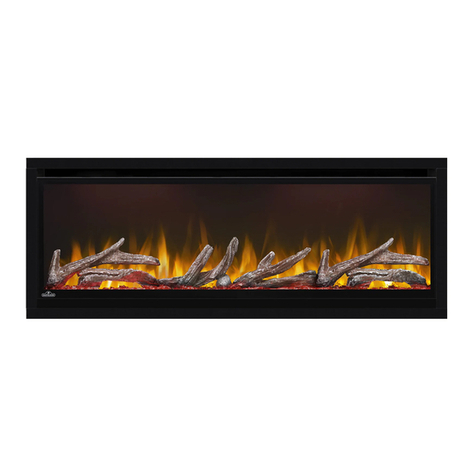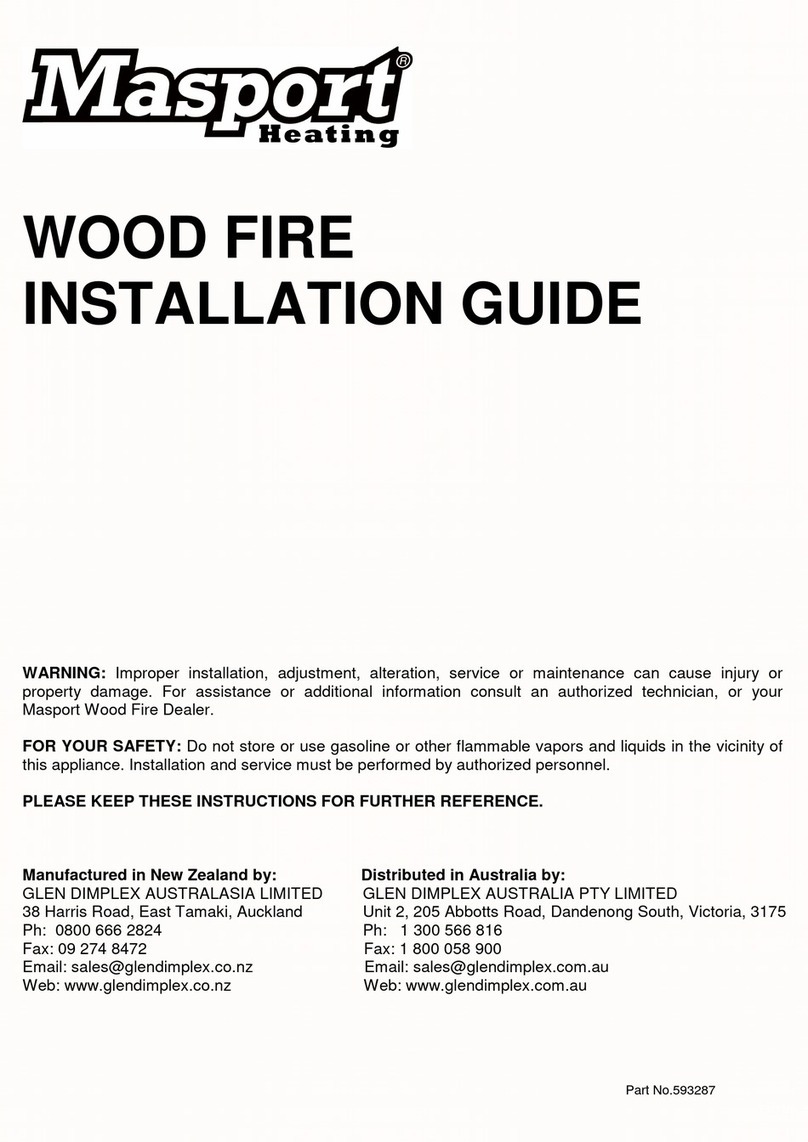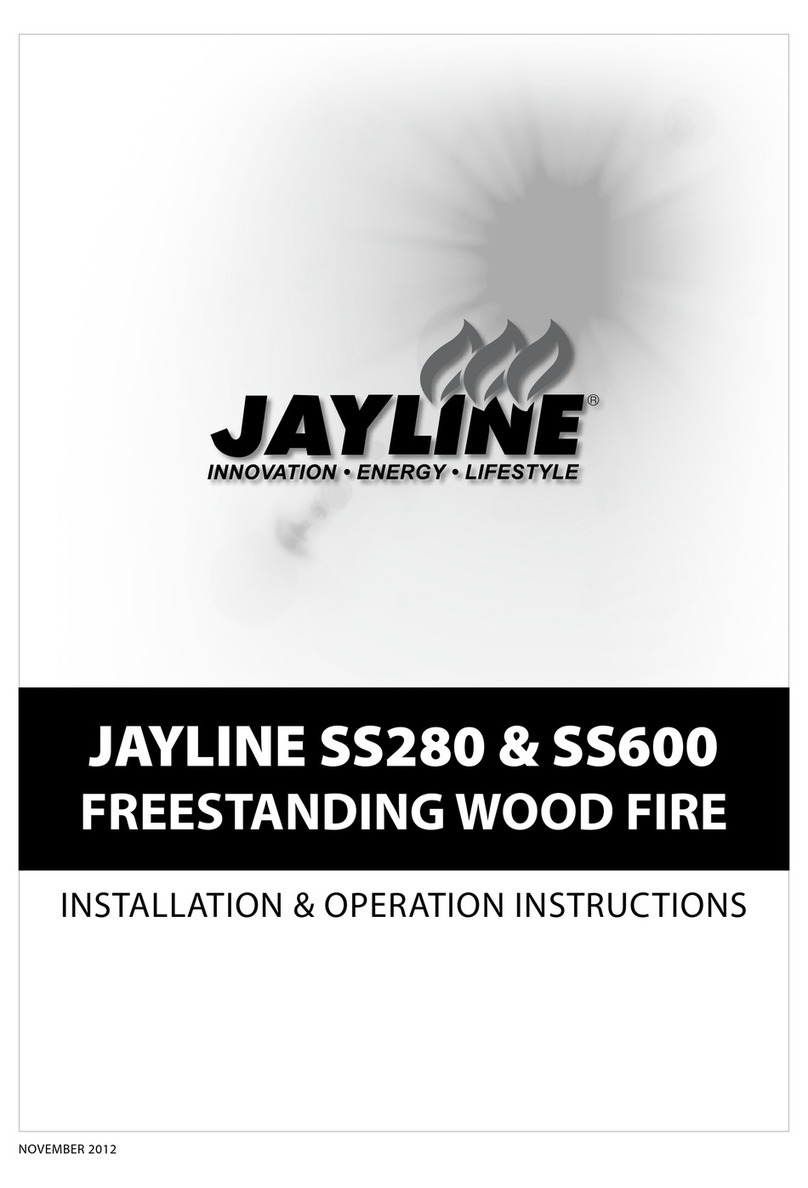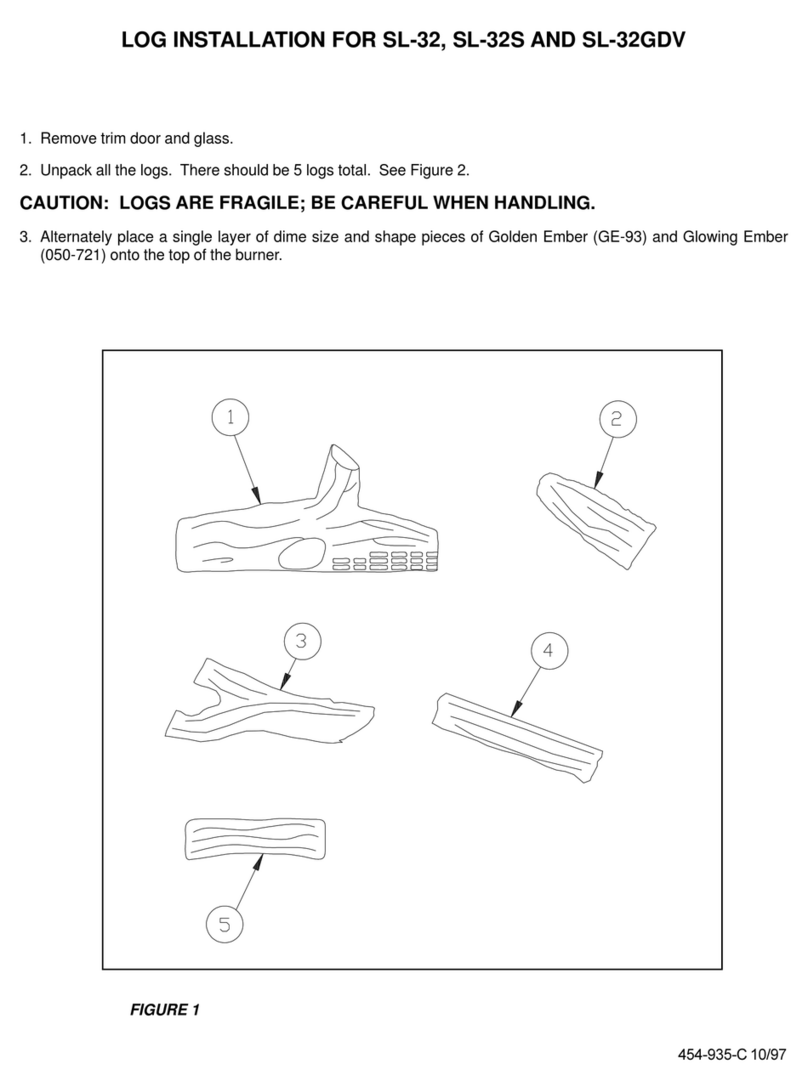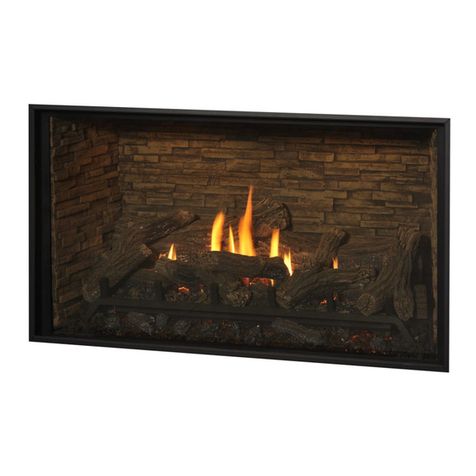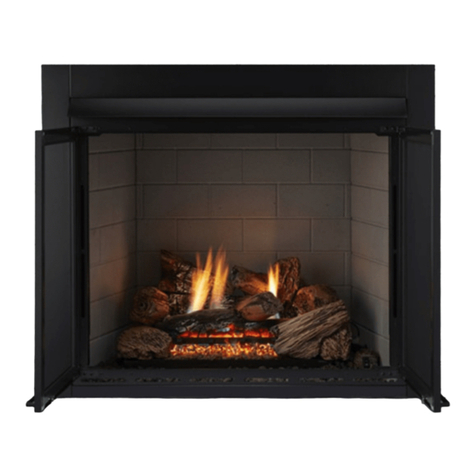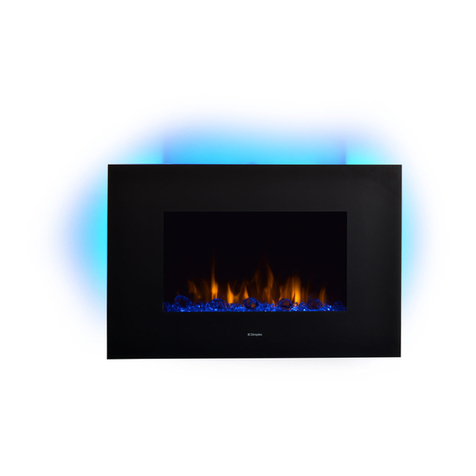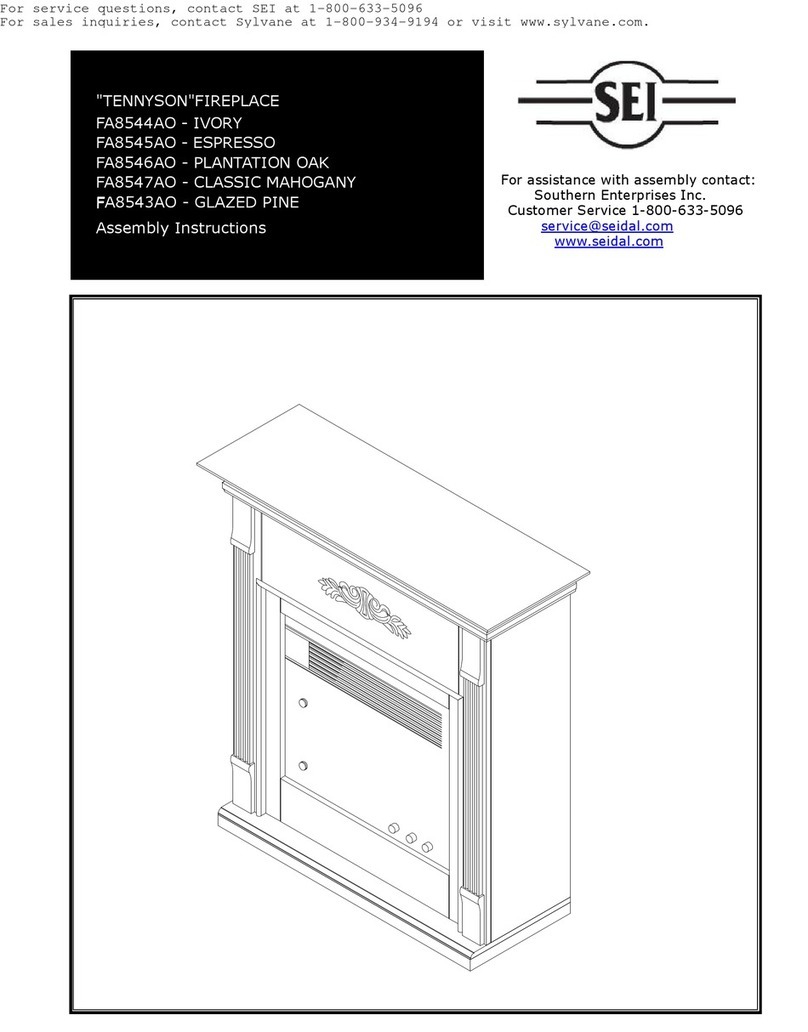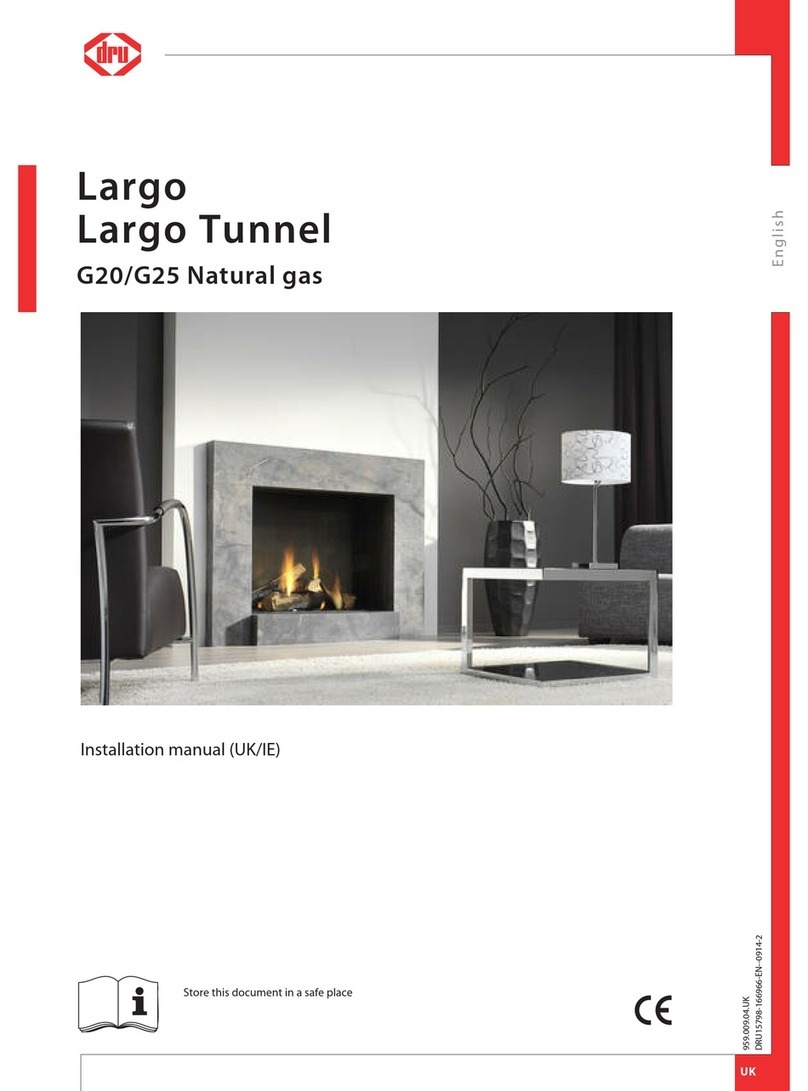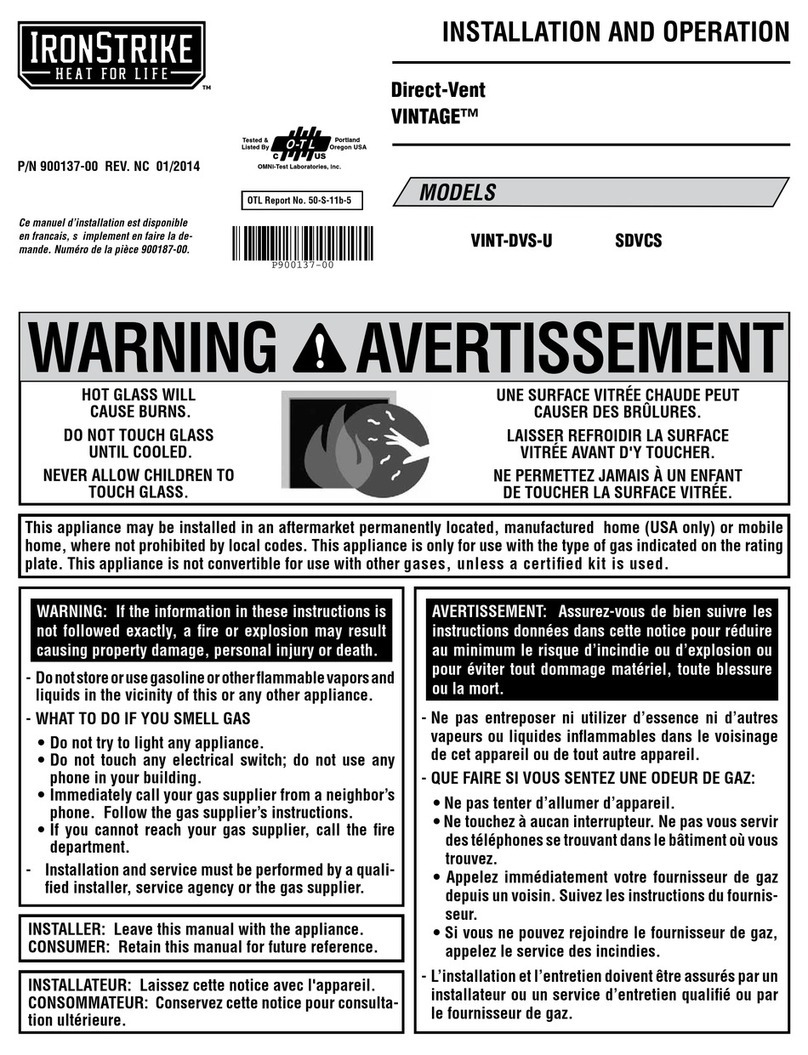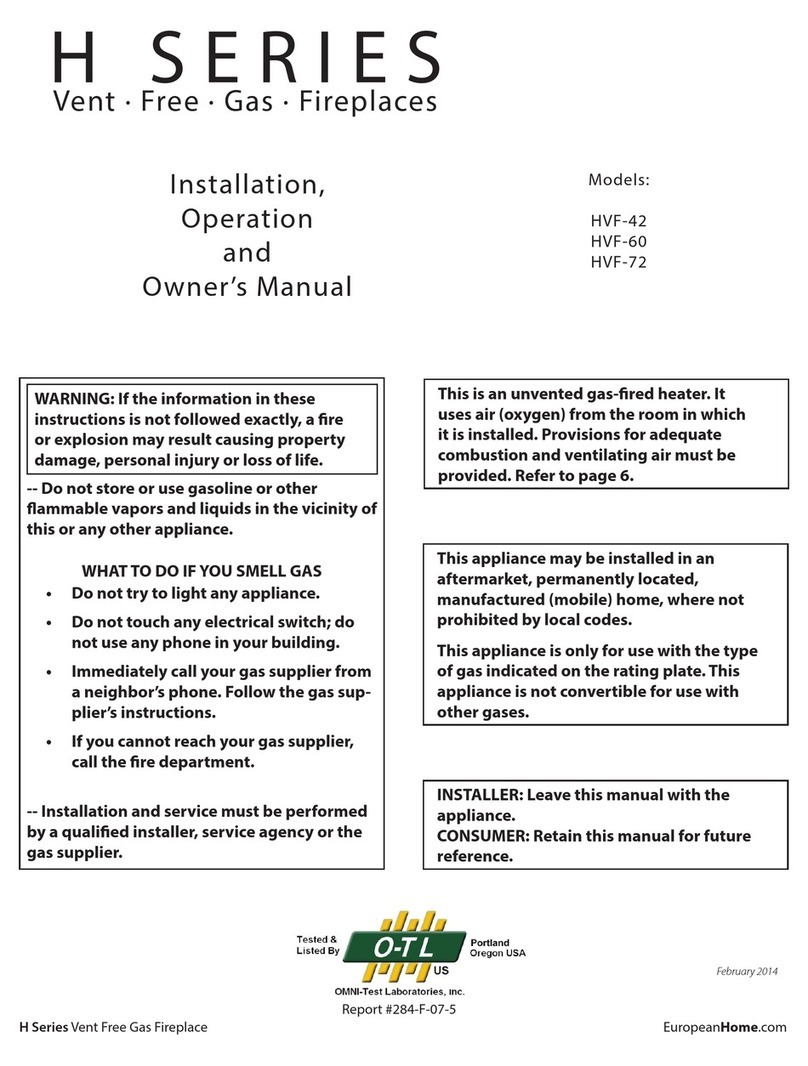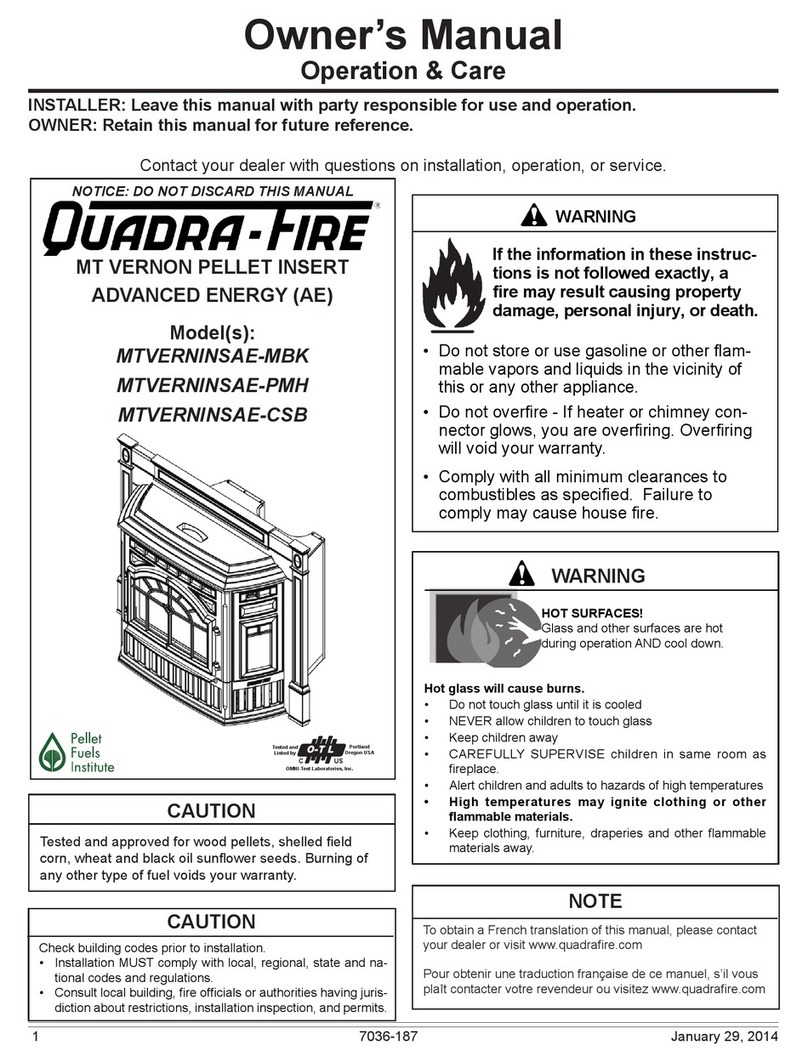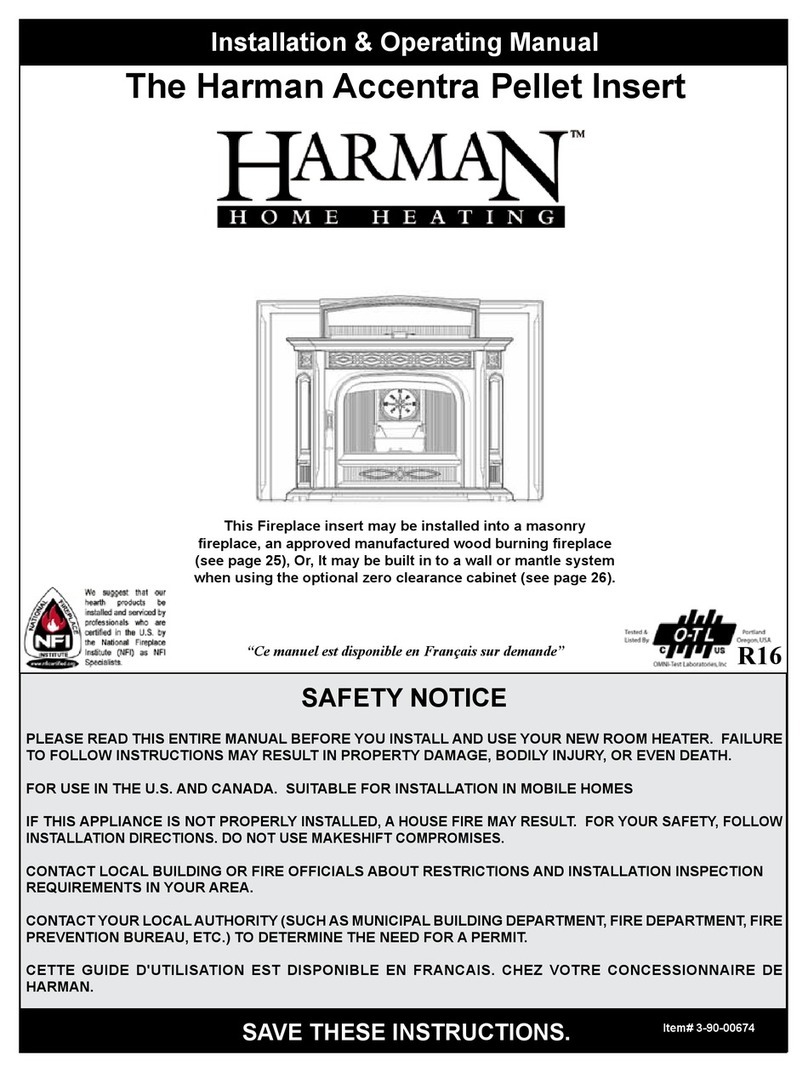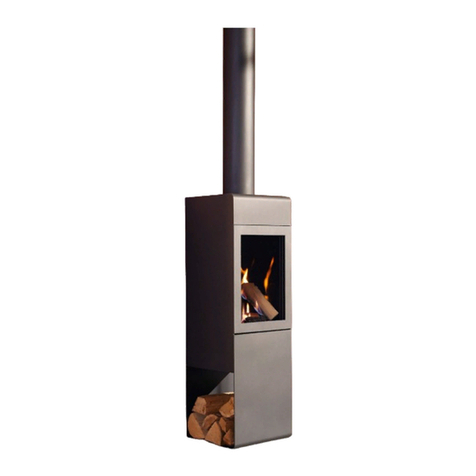
American Gas Log, LLC • IM-140 • Rev C 06/2019 9
C. Important Safeguards
• Other Fuels
- Although your gas log set is very realistic in appearance,
it is not a real woodburning fire and must not be used
for burning any fuel other than natural or propane
gas.
- To avoid irreparable damage to the appliance and/or
personal injury, wood, matches, paper, garbage or any
other material must not be placed or thrown on top of
the logs.
• Appliance Safety
-To avoid personal injury, do not touch hot surfaces
when the appliance is operating.
-Always ensure that the fireplace screen is closed when
the appliance is operating.
- Close supervision is necessary when the appliance is
being used near children.
• Do not remove any of the attached metal plates, which
contain important safety and operating information.
• Keep the appliance area clear and free of all combustible
materials, gasoline and other flammable vapors and
liquids.
• A qualified service technician must perform installation
and repair. The appliance should be inspected and cleaned
annually by a qualified service technician. More frequent
cleaning may be required due to excessive lint, dust, pet
hair, etc. It is imperative that the control compartments,
burners and air passageways are unobstructed during
operation.
- Review proper placement of logs, rockwool, lava rock,
sand or vermiculite.
- Check the wiring.
- Ensure there are no gas leaks.
- Ensure the flow of combustion and ventilation air is not
obstructed (front grilles and vent caps).
• Before installing into a solid fuel burning fireplace, the
chimney and firebox should be inspected and cleaned to
remove soot, creosote, ashes, paint, bird nests etc.
• Annual examination of the chimney must be performed
by a qualified agency to ensure proper ventilation of flue
gases created by this appliance.
• Have the chimney and adjacent structure inspected and
cleaned by qualified professionals. American Gas Log,
LLC recommends that NFI certified professionals, or
technicians under the direction of certified professionals,
conduct a minimum of an NFPA 211 Level 2 inspection
of the chimney.
• Replace component parts of the chimney and fireplace as
specified by the professionals.
• Ensure all joints are properly engaged and the chimmney
is properly secured.
• Do not allow fans to blow directly into the fireplace. Avoid
any drafts that alter burner flame pattern.
• Do not use a blower insert, heat exchanger insert or other
accessories not approved for use with this appliance.
Solid fuels shall not be burned in a fireplace where a
decorative appliance is installed.
• If glass doors are present, the glass doors must be fully
opened while appliance is in operation.
Fire Risk
High Temperatures
Keep combustible household items away
from appliance.
Do NOT obstruct combustion and ventilation
air.
• Do NOT place combustible items on top
of or in front of appliance.
• Keep furniture, draperies away from
appliance.
WARNING
6 Maintaining and Servicing
A. Servicing Your Appliance
Risk of injury or property damage
Before servicing:
• Turn off gas.
• Turn off electricity to appliance.
• Disable remote control, if one is present.
• Ensure appliance is completely cooled.
After Servicing:
• Replace any screen or barrier that was removed.
• Reseal and reinstall any venting removed for
servicing.
WARNING
• Repair and replacement work should be done by a
qualified service technician.
• Always shut off the gas supply and make sure the appliance
is cool before beginning any service operation.
• Always check for gas leaks after servicing.
• Always check for proper venting.
